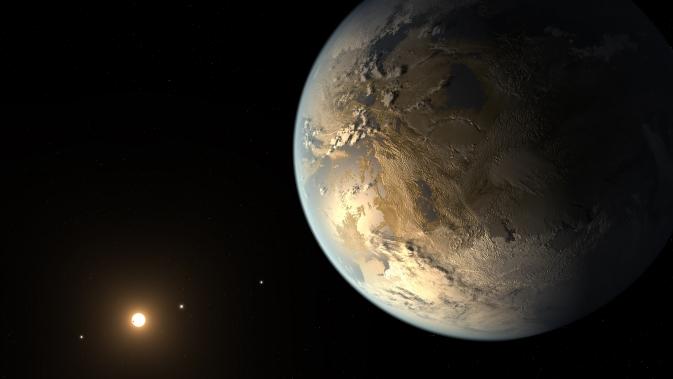Kepler-186f, the first Earth-size planet in the “habitable zone” of another star, has been discovered by NASA.
Astronomers using the agency’s Kepler Space Telescope found Kepler-186f orbiting a star in the zone--the range of distance from a star where liquid water might pool on the surface of an orbiting planet.
“The discovery of Kepler-186f confirms that planets the size of Earth exist in the habitable zone of stars other than our sun,” according to NASA. “While planets have previously been found in the habitable zone, they are all at least 40 percent larger in size than Earth and understanding their makeup is challenging. Kepler-186f is more reminiscent of Earth.”
Paul Hertz of NASA said that finding the planet “is a significant step toward finding worlds like our planet Earth.”
“Future NASA missions, like the Transiting Exoplanet Survey Satellite and the James Webb Space Telescope, will discover the nearest rocky exoplanets and determine their composition and atmospheric conditions, continuing humankind’s quest to find truly Earth-like worlds,” he said.

The diagram compares the planets of our inner solar system to Kepler-186, a five-planet star system about 500 light-years from Earth in the constellation Cygnus. The five planets of Kepler-186 orbit an M dwarf, a star that is is half the size and mass of the sun. (NASA Ames/SETI Institute/JPL-Caltech)
Previous research indicates that the planet is rocky but its mass and composition isn’t known yet.
“We know of just one planet where life exists -- Earth. When we search for life outside our solar system we focus on finding planets with characteristics that mimic that of Earth,” said Elisa Quintana, research scientist at the SETI Institute at NASA’s Ames Research Center, in the announcement.
“Finding a habitable zone planet comparable to Earth in size is a major step forward.”
Kepler-186f resides in the Kepler-186 solar system, which is about 500 light-years from Earth in the constellation Cygnus.
The planet doesn’t necessarily support life, the researchers said.
“Being in the habitable zone does not mean we know this planet is habitable. The temperature on the planet is strongly dependent on what kind of atmosphere the planet has,” said Thomas Barclay, research scientist at the Bay Area Environmental Research Institute at Ames, and co-author of the paper. “Kepler-186f can be thought of as an Earth-cousin rather than an Earth-twin. It has many properties that resemble Earth.”






Friends Read Free